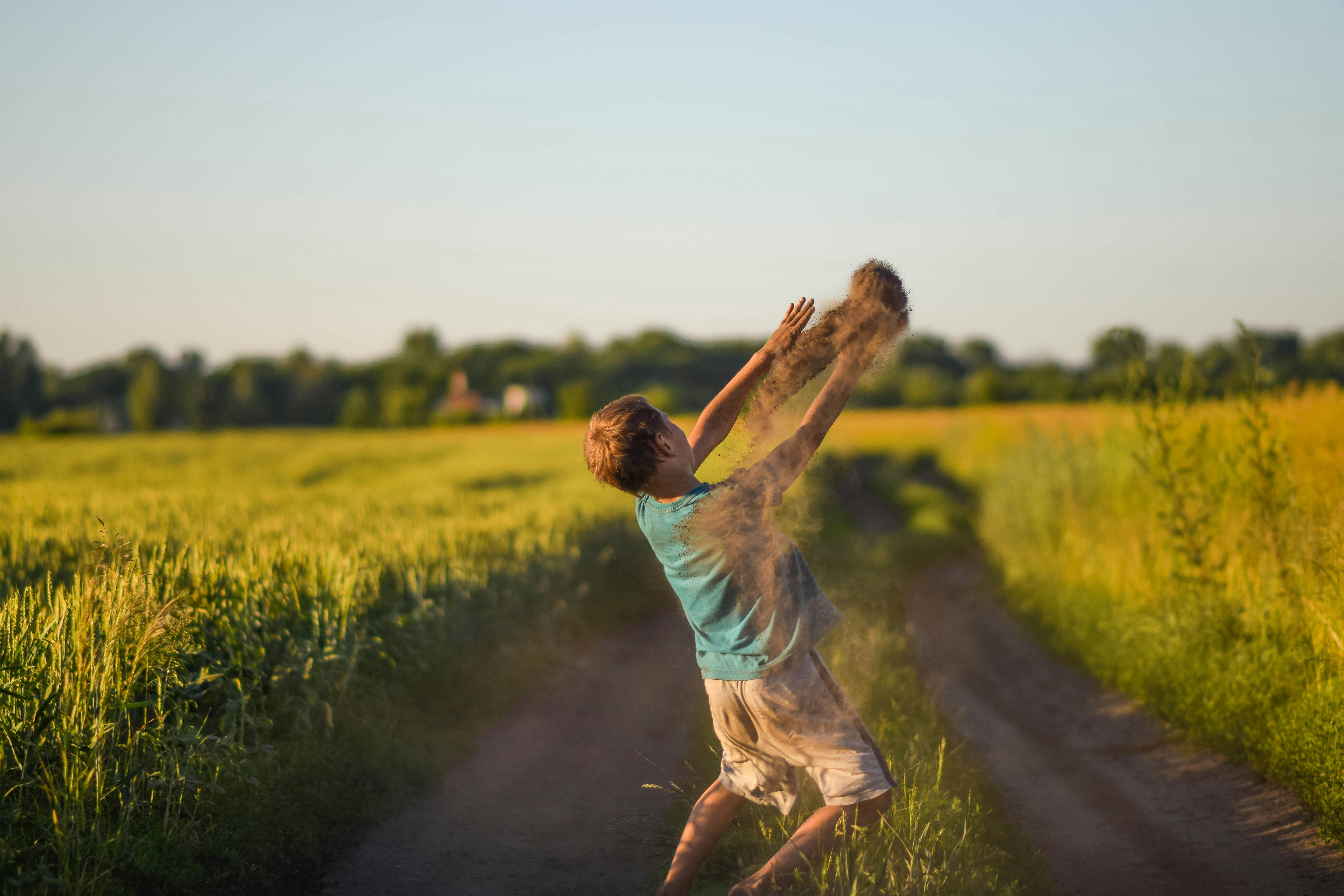Mastering Pet Training with Storytelling: Engage & Bond Today!
Imagine your pet, ears perked, gazing at you with a mixture of curiosity and excitement. What if you could take that moment and capture it within a narrative? This is the essence of “The Art of Pet Storytelling.” By intertwining storytelling techniques into your pet training sessions, you can transform both the training process and the emotional connection you share with your furry friend. Let’s delve into how narrative techniques—not just commands and rewards—can turn training into a captivating adventure for you and your pet.
The Power of Storytelling in Training
Storytelling isn't just for children or Hollywood. It’s a powerful tool for engagement and motivation that extends to our beloved pets as well. When we tell stories, we create a world filled with context, emotions, and impactful characters. These are essential elements that can ease anxiety and friction during training, making the entire experience enjoyable for both pet and owner.
Think of your training session as a chapter in a larger narrative. Each command your pet learns is a plot point that adds depth to your story, a story that has the potential to engage, entertain, and teach. Your pet is not just responding to commands; they are participating in a rich, imaginative tale that enhances their understanding and willingness to engage.
Character Development: Building Relationships
Every good story has memorable characters, and this is no different when it comes to your pet. As a proactive owner, think of yourself and your pet as the protagonists of a whimsical adventure. Is your dog an adventurous hero, always ready to explore new parks? Or is your cat a cunning strategist, planning out moments to sneak up on unsuspecting toys? By characterizing your pet, you redefine the training experience into something more relatable and interesting.
For example, when teaching the sit command, you might frame it as a daring challenge in your epic quest for “The Best Treat.” You could narrate, "Sir Fetch-a-lot, you must make yourself small to sneak past the Fierce Treat Guardian!" This narrative not only brings laughter but also makes it easier for your pet to grasp the desired behavior in a playful manner.
For more insights on how specific environments affect pet behavior, check out Biophilia in Pet Environments.
Plot Twists: Keeping It Engaging
What’s a story without an unexpected twist? Introducing surprises to your training routine can rejuvenate interest and excitement. Instead of monotonously repeating the same commands, throw in some creative challenges or games that require your pet to think on their paws.
You might come home and suddenly declare, "Today, we’re not just training; we’re on a scavenger hunt!" Hide their favorite toy, and guide them with commands like "hot" and "cold." This not only helps reinforce obedience but allows your pet to navigate through the unexpected, making them excited about learning and more engaged with you.
Curious about how these tactical advancements can affect your pet's learning? Discover more on how scent-based learning can enhance your training techniques.
Creating a Cohesive Narrative Structure
Similar to a good book, a successful training session should have clear beginnings, middles, and ends. Start with a calm introduction to set the stage—perhaps a soothing voice or a gentle touch. Move to the training commands as the central action, and conclude with playful rewards, like praise or treats.
Establishing a routine around these narrative structures means your pet can anticipate what comes next, reinforcing their sense of security. Routine helps in establishing your pet’s actions through predictability, making them feel more confident in responding.
Building Emotional Connections through Storytelling
The emotional bond between you and your pet is enriched when stories are woven into training sessions. When your pet feels like they're part of a tale, they become more emotionally invested in their actions and your relationship.
Use affectionate language, evocative imagery, and energetic expressions. Phrases like, "We are on the hunt for the lost squeaky treasure," create visual imagery that can captivate both you and your pet, allowing them to relate to the task at hand on a deeper emotional level.
By nurturing this emotional connection, you'll likely find that your pet responds with greater enthusiasm and affection. Each successful completion of commands becomes more than obedience; it marks a progression of your narrative together.
Engaging Multiple Senses
Storytelling isn’t confined to just words; it's a multi-sensory experience. Incorporate different senses into your training to make it richer. Use treats with varying textures and smells as rewards, or play background sounds that align with the adventurous theme of your training.
For example, while teaching them a new command, you could play sounds from nature to create an ambiance of outdoors adventures, or rhythmic music that fits the training narrative as you prepare your dog to learn new tricks. This resonates with principles discussed in The Impact of Nature Sounds, enhancing focus and receptiveness.
Practical Tips to Implement Storytelling in Training
To bring storytelling into your training, consider the following strategies:
-
Set a Scene: Create a vivid scenario. For instance, "We are preparing for the great dog Olympics, and only the best jumpers can join the team!"
-
Use Dialogue: Talk to your pet as if they understand every word. Give them names as you refer to their traits, like “Brave Sir Barks-a-lot” or “Cuddly Miss Whiskers.”
-
Introduce Challenges: Frame new commands as heroic tasks. Instead of just “Come,” say, "You must rescue the toy from the evil sofa monster!"
-
Reward with Story Points: Instead of just giving a treat, include accolades. "You did it! You’ve won the Golden Paw Medal today! Let’s celebrate with extra cuddles."
-
Repeat and Build: Just like sequels, build upon previous stories. Each training session can carry forward elements from the last, enhancing emotional connection and continuity.
Drawing Insights from Real Experiences
As you embark on this narrative journey, remember to reflect on real experiences from other pet owners or experts. Anecdotes can provide a wealth of insight into different ways of utilizing storytelling in training.
Case studies reveal that owners who’ve adopted a storytelling approach tend to see improved behavior in their pets, not just during training but throughout daily interactions. These bonds deepen as pets begin associating training with fun and time spent with their owners.
Explore more on practical experiences in The Ultimate Guide to Positive Reinforcement, which can also uniquely fit into this narrative structure.
Continuous Learning: Adapting Narratives
Just as stories evolve, your training techniques should also adapt. Assessing what resonates best with your pet's responses allows you to refine your storytelling approach continuously. Some chapters might be more engaging than others, so be flexible in exploring new narratives that invigorate your training routine.
Keep up with the latest trends in pet training and behavior by engaging with credible sources in pet psychology and behavior. Staying informed helps you, as a pet owner, evolve your storytelling methodology and enhance your pet’s instincts.
Engaging in Community Stories and Resources
Engage with other pet owners who’ve successfully applied storytelling techniques in training by joining forums or community groups. Platforms like local pet clubs or online forums, such as the ASPCA Community, are treasure troves of shared experiences, tips, and encouragement.
You can further deepen your understanding of the power of storytelling in fostering healthy pet behaviors through resources available in Gamifying Pet Training, which enhances both bonding and cognitive engagement.
Final Thoughts: Your Ongoing Narrative with Your Pet
The journey of pet training through storytelling is one of adventure, connection, and love. As you weave together these tales, remember that the ultimate goal is to strengthen your bond with your pet. When they stop seeing commands as mere chores and more as stepping stones in your shared story, both you and your pet will find joy in the learning process.
So grab that leash or toy, craft your first narrative, and embark on a new chapter of training that promises to excite and engage. Here’s to your pet learning under the banner of imagination, creativity, and relationship-building—making every interaction a cherished part of your ongoing story.











